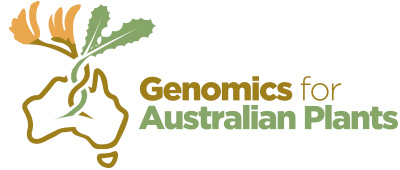Phylogenomics
Background:
GAP Phylogenomics has the ambitious long-term goal of resolving the Australian Angiosperm Tree of Life (AAToL) to species level using a common set of hundreds of (predominantly nuclear) molecular markers. This is to be achieved by supporting collaborators to accomplish their research goals that align with GAP Phylogenomics goals, and coordinating these efforts across the botanical research community. Work will proceed in three stages (as follows). Current resources limit GAP to completion of the first two stages. It is anticipated that the genomic and bioinformatic resources and research capabilities built within the Australian plant research community will help leverage funding for the third stage.
Stage 1: Resolve the AAToL to genus level using one exemplar species of at least 95% of accepted (APC) Australian angiosperm genera.
Stage 2 : Generate phylogenomic datasets with denser sampling within genera to address questions of monophyly, evolution, and biogeography.
Stage 3: Resolve the AAToL to species level, complete for 95% of accepted (APC) Australian angiosperm species.
The GAP phylogenomics project utilises a target capture approach (a.k.a. bait capture, target enrichment, exon capture) using a common set of hundreds of nuclear markers, with plastid markers recovered as off-target reads. This approach provides a large genomic dataset to resolve the backbone of the phylogeny (to genus level) to provide a phylogenetic framework for continental-scale systematic, ecological and evolutionary studies. Future work (i.e. Stages 2 and 3 above) will focus on more detailed studies of specific clades, which may require the use of clade-specific marker sets.
Stage 1 of the phylogenomics project
Stage 1 of the AAToL project was initiated in February 2020 and has been undertaken in collaboration with the Plant and Fungal Tree of Life project (PAFTOL). PAFTOL aims to estimate a genus-complete phylogeny of the world’s angiosperms (c. 14,000 genera) using the Angiosperms353 target capture nuclear bait set. PAFTOL is in the final two years of its program and current funds are insufficient to complete more than 50–60% of genera. The GAP – PAFTOL collaboration ensures at least 95% coverage of Australian genera, using Australian species exemplars. In stage 1, target capture sequencing will use the Angiosperms353 bait set to leverage global datasets generated by PAFTOL and others, and to maximise re-use of GAP data. The GAP phylogenomics working group meets regularly to progress the AAToL project, including with the PAFTOL team, to manage and develop collaboration between the two significant and aligned programs.
Stage 1 team leads
1. Australian National Herbarium (ANH) | Alexander Schmidt-Lebuhn
2. New South Wales (NSW) | Hervé Sauquet
3. Queensland (QLD) | Gillian Brown
4. South Australia (SA) | Michelle Waycott
5. Victoria (VIC) | Todd McLay
6. Western Australia (WA) | Kelly Shepherd
Stage 2 projects (click on the project name for more details)
1. Acacia and related mimosoid legume phylogenomics
2. Alismatales (Alismatids)
3. Boronieae (Australian Rutaceae)
4. Drosera (sundews)
5. Ericaceae (Epacrids, southern heaths)
6. Fabaceae tribe Mirbelieae (Bush peas)
7. Hibbertia (Guinea flowers)
8. Lasiopetaleae (Malvaceae)
9. Myrtaceae tribe Chameulaucieae (Waxflower)
10. Persoonia (Geebung, Snottygobble)
11. Santalaceae (Viscaceae & Amphorogynaceae) (mistletoes)
12. Stylidiaceae (Triggerplant family)
13. Tecticornia & Salicornia (Samphires)
14. Teucrium (Germander)
15. Typhonium (Arum lilies, Dead horse lilies)
16. Xanthorrhoe (grass trees, yacca, balga)
GAP phylogenomics researcher directory:
The researcher directory for the GAP Phylogenomics project can be found in the link here.
Partners:
The GAP Phylogenomics project is actively working with the Royal Botanic Gardens, Kew, Plant and Fungal Trees of Life (PAFTOL) project to achieve our shared goals.
The PAFTOL-GAP Collaborative Agreement can be viewed here.
Related media:
Completing the plant Tree of Life with Dr William Baker from the Royal Botanic Gardens, Kew, December 2020
https://www.youtube.com/watch?v=6wxh9hEHvzU
Conflict in multi-gene datasets: why it happens and what to do about it, Alexander Schmidt-Lebuhn, May 2021
https://www.youtube.com/watch?v=1bw81q898z8
Detection of and phasing of hybrid accessions in a target capture dataset, Lars Nauheimer, June 2021
https://www.youtube.com/watch?v=japXwTAhA5U
